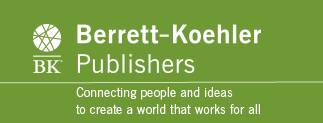1 The “Big P,” “little p” Purpose
The great and glorious masterpiece of man is to know to live to purpose.
—MICHEL DE MONTAIGNE
Two Views of Purpose
The question What is my life’s purpose? can seem extremely daunting . . . because it is! The idea that each of us was put here on planet Earth to fulfill some greater purpose may feel overwhelming, and it can even make us reject the idea of purpose altogether. As we go through our day-to-day lives, facing the challenges of everyday living, it’s often hard to see why purpose matters. Being stuck in traffic, working overtime, even just relaxing in front of a screen (TV, phone, or otherwise) all seem inconsistent with whatever our true sense of purpose might be. Consequently, we might just conclude that the whole notion of purpose is just not for people like us.
But we need not think of purpose in such a noble—and potentially overwhelming—manner. Instead, we can conceive of purpose as having two dimensions—one larger (“Big P”) and one smaller (“little p”), so to speak. “Big P” purpose connects us to a worthy cause, something bigger than ourselves, something that establishes a noble theme throughout our entire life. “Little p” purpose is about the simple actions we take on a daily basis to contribute to the lives and well-being of others. Not every act has to save the world to be valuable and meaningful. Not every purpose has to connect to an exalted cause. Simple everyday actions, performed thoughtfully—with compassion and a sense of “little p” purpose—can make for a life that truly matters.
When Richard explains this distinction to audiences, they breathe a huge sigh of relief. This “little p” purpose helps them to see living purposefully on a daily basis as something they can get their minds (and hearts) around without feeling overwhelmed by the daunting nature of a “Big P” purpose.
Purpose Is a Path (“Big P”) and a Practice (“little p”)
Another way to think about this distinction is that “Big P” purpose is the path, while “little p” purpose refers to the practices we engage in along that path. “Big P” addresses the why; “little p” answers the how. For example, Richard defines his “Big P” purpose as “to grow and to give.” This resolution has not really changed throughout his career. The path Richard follows through life is defined by his passion to help people unlock a sense of purpose in their lives. This is his reason to rise, and it has been for decades.
Richard’s “little p” purpose is “to make a positive difference in at least one person’s life every day.” His regular activities reflecting about purpose—whether writing, speaking, or walking in the woods—are among his daily practices. A blog post he writes, or a keynote presentation he delivers, or a thoughtful email or kind word he shares are not going to change the world, but each activity is a “little p” way of acting consistently with his aim to help others take practical steps to positively impact the life of another.
Dave, by contrast, is one of those people for whom “Big P” purpose is harder to articulate. He recognizes a variety of themes in his life, but feels they don’t always add up to a single statement of something larger. As a provisional possibility, he says his “Big P” purpose could be framed as “encouraging people to think and talk.” But when it comes to “little p” purpose, Dave gets it. His “little p” purpose is expressed on a daily basis in myriad ways: in the classroom, with his colleagues, with his family and friends, and through his own introspection and meditative practices.
Dave accepts that he’s not saving the world when he writes comments on students’ papers, but he still tries to do so in a way that encourages them to think critically. It’s okay with him that he’s not manifesting “Big P” purpose when he’s in a meeting with faculty colleagues, but if he can be a good listener and work thoughtfully toward collaborative solutions to what are sometimes rather insignificant problems, that’s fine. And he knows that sitting quietly focusing on his breath for half an hour won’t bring about world peace, but it is a practice that helps him to be the best teacher, colleague, and loved one he can be.
Unlock Our “little p” Purpose
Each of us is called to contribute in many ways in this life. We’re all likely to discover a few meaningful things we’re passionate about. Sometimes we will be paid for those contributions, but most often we will make a difference in the lives of others because it fulfills us in other ways. People (including the authors of this book!) talk a lot about “finding purpose” (“Big P” purpose, that is). Yet, more typically, it’s the other way around: purpose finds us! Granted, we may only see it dimly, or just catch glimpses from time to time, but it’s there. This is when we need to do some personal reflection to identify those actions and attitudes that will bring the most meaning to our lives.
Unlocking our “little p” purpose (that is, the practices) can be an effective way to unlock “Big P” purpose (the path). Consider these three core essentials as part of your daily purpose reflection, to reveal your “little p” purpose:
-
1. Purpose is a presence. Purpose is a presence within us all the time. It is a constant presence in our lives that merely needs to be unlocked via reflection and action.
-
2. Purpose is a path. Purpose is a path we follow by identifying our “Big P” purpose, the underlying principle or lodestar that guides our life. We stay on that path by staying true to ourselves.
-
3. Purpose is a practice. Purpose is a practice, or set of practices, by which we unlock our “little p” purpose. These daily actions express our reason to rise and provide us the opportunity to grow and to give every day.
These core essentials frame the three primary parts of this book. Opportunities, activities, and tools for reflecting on each of these core essentials follows. We invite you along on this purposeful journey!
Everyone Has a Purpose—What’s Mine?
It’s been more than fifty years since Richard began studying purpose (both “Big P” and “little p”) and longer than that since he began collecting stories from wise elders for insights into aging purposefully. One message has resounded throughout these decades: Our life begins twice. First, the day we are born, and second, the day we accept the challenge that our life is essentially ours to choose. If we do not exercise that choice, someone or something else will choose for us. A choice must be made.
Although this may seem somewhat theoretical, or perhaps the sort of abstract speculation that Dave and his colleagues in the ivory tower of academia might argue about at a philosophy conference, the subject of purpose is explored in popular culture all the time. For instance, the 2020 Pixar comedy-drama film Soul explores this beautifully. The disembodied soul, 22, refuses again and again to be sent to Earth as a human being because they have been unable to identify their life’s purpose. But what they come to learn, with the help of jazz musician Joe Gardner (in the form of a cat), is that purpose isn’t something predetermined that you’re born with. Rather, purpose is something you discover about yourself by living fully and experiencing all that life has to offer and that you have to offer life. The film calls this a person’s “spark.” As Joe puts it: “Your spark isn’t your purpose; that last box is filled in when you’re ready to live.” Being ready to live is what unlocking purpose is all about.
Looking back a bit further in the popular culture archives, we find an entertaining evocation of purpose in the musical comedy Avenue Q, one of the longest-running shows in Broadway history. In 2004 the original production won several Tony Awards, including Best Musical, Best Book, and Best Score. Major productions were mounted in Las Vegas and London, and the musical has been staged and toured in several countries around the world. The show is largely inspired by (and is in the style of) the classic children’s television show Sesame Street. Most of the characters are puppets operated by actors onstage; the set depicts several tenements on a rundown street in an outer borough of New York City. However, the characters are in their twenties and thirties and face adult problems instead of those faced by preschoolers, thus making the show ideal for the adults who grew up with Sesame Street.
A recurring theme is the central character’s search for his elusive “purpose,” most clearly presented in the song titled simply “Purpose.” The core message—Everyone else has a purpose, so what’s mine?—includes witty lyrics that liken purpose to a little flame that lights a fire under one’s ass or that feels like driving a car with a full tank of gas. Audience members laugh out loud at the antics of the actors and puppets on stage but also relate to the importance of purpose as they follow the characters in their search for this elusive but necessary source of meaning in life.
It’s clear from the huge success across a broad audience of artistic creations like Avenue Q and Soul that purpose is not simply of interest to those who write books or teach or coach and counsel others for a living. Purpose is a theme that finds its way into all walks—and avenues—of existence. It helps us understand what is core to our lives, what matters most in our actual day-to-day living. With purpose, our world suddenly comes to life.









